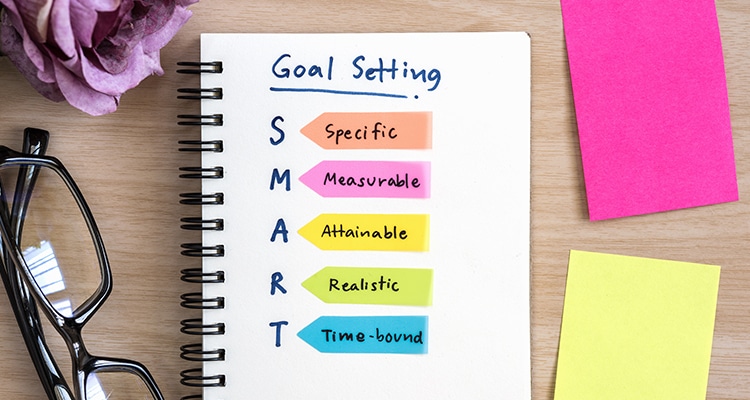“New year, new me.”
We all have had the same sentiment before. Yet, has anything changed over the years?
Entering a new year can be exciting for most, with some even motivated to start new goals. However, in about six months or less (even as early as January), many will have abandoned their objectives.
To help you stay the course, here’s how to set good New Year’s resolutions that actually last.
Set S.M.A.R.T. Goals

There are several factors involved in why most goals for the new year fail.
Sometimes, you set a goal that’s too unrealistic.
So, how do you go about this?
For starters, think smart—also an acronym for S.M.A.R.T.
Your goals have to be specific, as in don’t just say you want to lose weight, for instance. Think how many kilograms you want to get rid of.
Resolutions also have to be measurable. Keep track of your progress. Write it down in a journal or on your notes app so you don’t lose it. Doing so helps build the right habits toward your goals.
The “A” in S.M.A.R.T. stands for achievable. When setting goals for the new year, it doesn’t always have to be big or life-changing. That will only leave you feeling frustrated. Thus, start with small, achievable goals that you can check off your list.
Make sure your targets are relevant. What this means is that you have to complete these resolutions for yourself, not for others. Why did you write down these goals in the first place? Was it to please others or to improve yourself?
Lastly, keep your objectives time-bound. Set a realistic amount of time within which you can potentially accomplish your plans. You can even add minor goals in between to serve as check points to your overall progress.
Make Your Master Plan

One common mistake when writing down intentions for the upcoming year is failing to plan. You don’t just “magically” achieve your goals. There have to be steps for you to reach them.
Sticking to your New Year’s resolutions is easier with a concrete strategy.
Charles Duhigg, author of “The Power of Habit,” suggests that building up good habits should be broken down into three parts: cue, routine, and reward.
Let’s say you are trying to cut down on your smoking. What happens here is that when you are feeling stressed (cue), you start smoking (routine). As a result, you feel relaxed (reward).
To break this habit, change your routines when you notice your cues. You could, for example, chew gum instead when you feel stressed out. This way, you still get the reward, but without the routine or bad habit you used to do.
So, evaluate what other “cues” you have and think of positive routines to replace the succeeding bad habits with.
Overcome Hurdles

Okay, so the reality is that change is not instantaneous. It will never happen overnight.
On some days, you might fail to keep up with your resolutions. However, don’t let that discourage you.
If, for instance, you are trying to lose weight (around five pounds), don’t focus on the big number. Think of how much you have lost already and that if you keep going, you will double that number. (“I’ve already slimmed down two pounds, and if I keep pushing forward, I’ll lose twice as much.”)
You will find that you are much more likely to continue working towards your goals this way.
So, how to make New Year’s resolutions and keep them? It’s all a matter of building good habits. To achieve big dreams, start taking small but consistent steps today.
And if part of your good New Year’s resolutions is to find a remote job, you might want to check out Remote Staff’s job listings, which are regularly updated.
After being in the industry for 15 years, Remote Staff has helped countless job seekers find their dream remote jobs. Next year, you might be one of them too! Merry Christmas and we wish you the best of luck!

